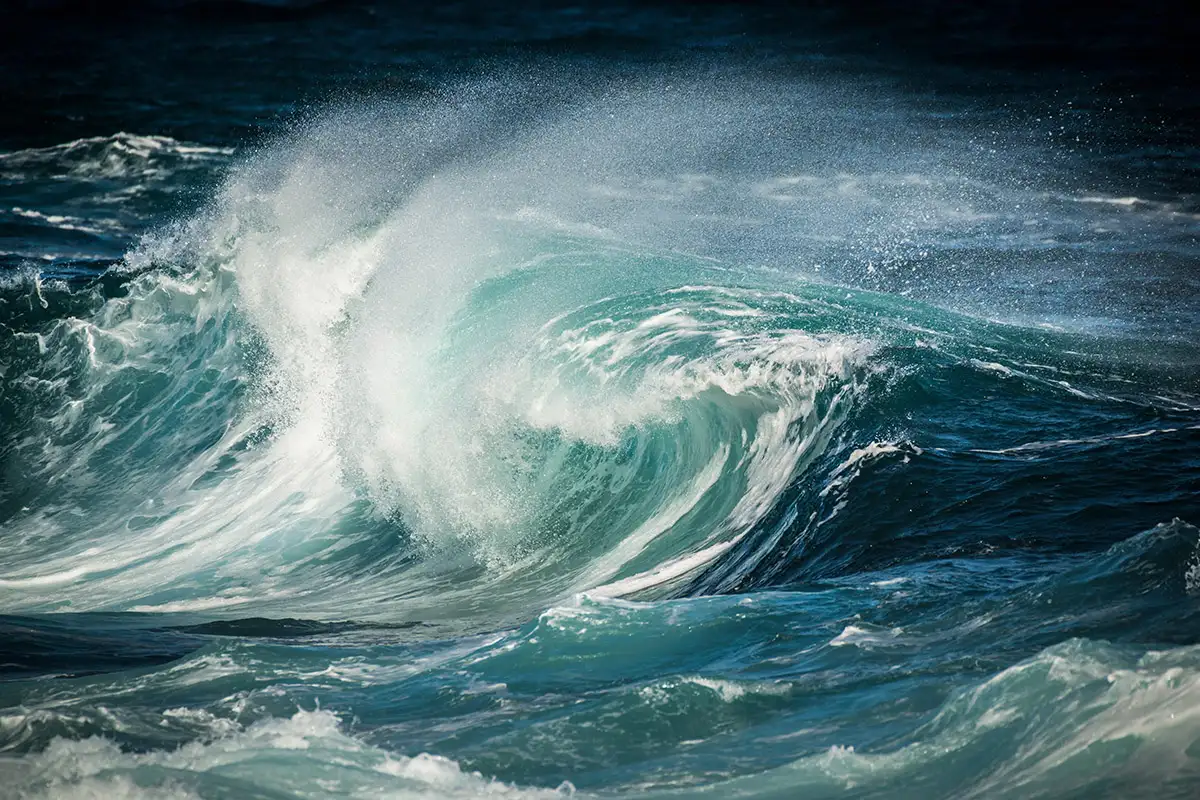The Basics of Ocean Waves

Photo Source: https://www.newscientist.com/question/causes-waves-ocean/
Ocean waves are a fundamental feature of the Earth's surface, and have captivated scientists and laypeople alike for centuries. They are created by a variety of sources, including wind, earthquakes, and underwater landslides, and can travel thousands of miles across open water before breaking on a beach or coastline. In this article, we'll explore the different types of ocean waves, how they form, and the factors that influence their behavior.
There are two main types of ocean waves: wind-generated waves and swell. Wind-generated waves, also known as surface waves, are created by the friction between wind and the ocean surface. As wind blows over the water, it creates ripples that eventually grow into larger waves. The size and shape of these waves depend on a variety of factors, including wind speed and duration, fetch (the distance over which the wind blows), and the direction of the wind relative to the shoreline.
Swell, on the other hand, are larger ocean waves that are created by distant weather systems, such as storms or typhoons. These waves can travel great distances across the open ocean, sometimes for thousands of miles, before reaching the shoreline. They are often larger and more regular in shape than wind-generated waves, and can be observed from the beach as a series of evenly spaced waves breaking at the same point along the shoreline.
Another important aspect of ocean waves is their period, or the time between two successive wave crests. The period of a wave is determined by its wavelength, or the distance between two consecutive crests. Longer wavelength waves have a longer period and travel faster than shorter wavelength waves.
In addition to these two main types, ocean waves can also be classified based on their direction of propagation. There are two types of waves in this context - progressive and standing waves. Progressive waves move in the direction of their propagation and the energy is transported with the wave. Standing waves, on the other hand, are fixed in one spot, and their energy oscillates back and forth between crests and troughs. Standing waves are usually formed in shallow water or enclosed regions such as a bay or a harbor.
The height of the waves also plays an important role in their behavior. Taller waves will have more energy than shorter ones, and will be able to travel further before breaking. This is why some waves are able to reach the shore while others dissipate before they reach the beach. However, it is important to note that the height of the waves alone is not the only determining factor of their power, the mass of water transported by the wave is also important, making the concept of Wave power an important field of study in oceanography
The study of ocean waves is an interdisciplinary field, drawing on physics, mathematics, and geology. Scientists use a variety of tools and techniques to study waves, including buoys, satellites, and computer models. This research helps to improve our understanding of the dynamics of the ocean and can aid in the prediction of dangerous wave conditions for coastal communities and shipping lanes.
In conclusion, ocean waves are a fascinating and complex aspect of the Earth's surface. They are created by a variety of sources and can take many different forms. The study of ocean waves can provide important information about the dynamics of the ocean, helping to protect coastal communities and shipping lanes from dangerous conditions.
References:
John A. Knauss, "Introduction to Physical Oceanography", American Geophysical Union, Washington, DC, 1979
A. K. Gupta, “Ocean Waves: The Stochastic Approach”, Cambridge Ocean Technology Series, Cambridge University Press, New York, 2005
J. R. Beckmann and A. Spaulding